- Joined
- Feb 17, 2013
- Messages
- 4,406
Well, the time has come to move my (larger of 2) shop from Oregon to "somewhere" in the Phoenix area. We'll buy a house with shop space after I've sold my Oregon house, then move my wife's house (and my smaller shop).
MANY, MANY thanks to all of you who've made suggestions about how to go about moving machine tools!!!!
I decided that, rather than depending on a crew of tweakers or off-the-street lowlifes to load heavy/fragile machines into a moving van, I'd rent a PODS container, load it myself, have it shipped to AZ, and stored until we have a new house.
Progress to date: Disassembled my RF-30 mill and 12x24 lathe from their respective stands, etc. Removed the motors to reduce weight. Made a pair of 24 x 48 x 1 ½" (doubled ¾" ply) bases with attached 2x4 rails. Lag screwed the machines to these. Used an engine hoist to place them partially inside the PODS atop ¾" pipe rollers. Rolled them inside, levered them up with the tongue of a 2-wheel dolly to remove the rollers. Securely screwed both platforms to the floor.
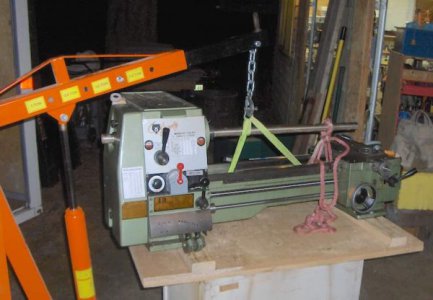
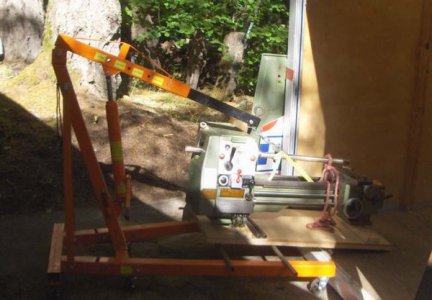
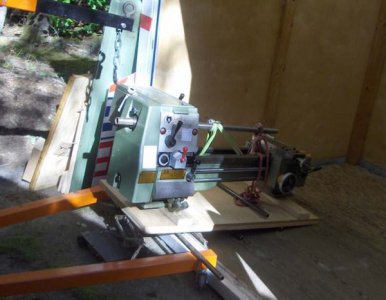
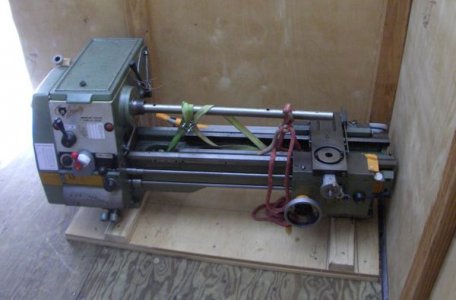
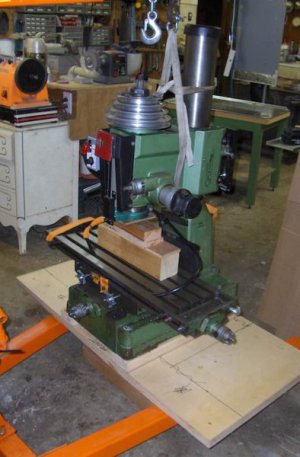
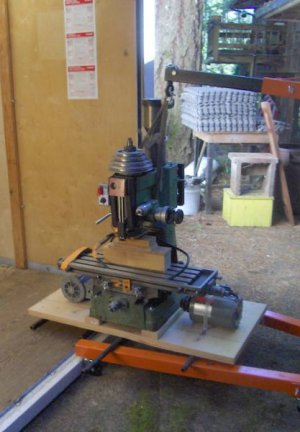
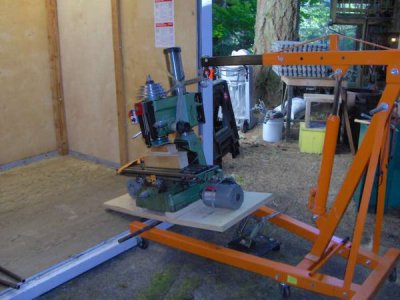
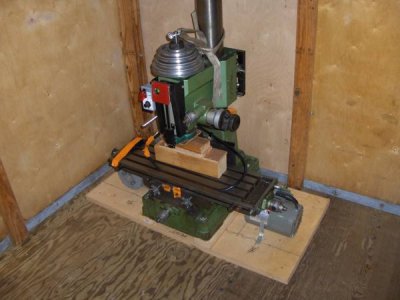
I then upended the mill table (visible in the background of the first mill picture), added plywood plates on the open sides, and used the resulting "box" to hold a great bunch of rod and bar stock. Being paranoid, I later unloaded the stock, added a sheet of plywood to reinforce the PODS floor, and reloaded it all (and then some).
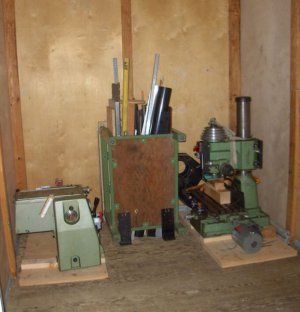
Next day I loaded in my 14" wood cutting bandsaw and two roll-arounds. Still need to load the lathe stand plus several boxes of lathe and mill parts. I don't plan to load the PODS any higher than about halfway up. No sense taking chances.
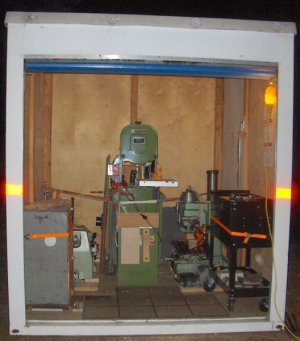
Note that the black (HF) cart is loaded with the drawer faces against the wall. The gray one has handles on the drawers, so I loaded it facing out. But it has provision for a lock bar running down the faces of the drawers, so no problem with opening.
By the way ... working slowly and carefully, I've been able to do all of this by myself, using just the engine hoist, the rollers, some hand tools, and a saw. My wife did help when it came time to remove the rollers from under the platforms. I wouldn't want to move a Bridgeport by myself, but now feel pretty confident about moving/manipulating medium-sized tools.
More fun to follow ...
MANY, MANY thanks to all of you who've made suggestions about how to go about moving machine tools!!!!
I decided that, rather than depending on a crew of tweakers or off-the-street lowlifes to load heavy/fragile machines into a moving van, I'd rent a PODS container, load it myself, have it shipped to AZ, and stored until we have a new house.
Progress to date: Disassembled my RF-30 mill and 12x24 lathe from their respective stands, etc. Removed the motors to reduce weight. Made a pair of 24 x 48 x 1 ½" (doubled ¾" ply) bases with attached 2x4 rails. Lag screwed the machines to these. Used an engine hoist to place them partially inside the PODS atop ¾" pipe rollers. Rolled them inside, levered them up with the tongue of a 2-wheel dolly to remove the rollers. Securely screwed both platforms to the floor.








I then upended the mill table (visible in the background of the first mill picture), added plywood plates on the open sides, and used the resulting "box" to hold a great bunch of rod and bar stock. Being paranoid, I later unloaded the stock, added a sheet of plywood to reinforce the PODS floor, and reloaded it all (and then some).

Next day I loaded in my 14" wood cutting bandsaw and two roll-arounds. Still need to load the lathe stand plus several boxes of lathe and mill parts. I don't plan to load the PODS any higher than about halfway up. No sense taking chances.

Note that the black (HF) cart is loaded with the drawer faces against the wall. The gray one has handles on the drawers, so I loaded it facing out. But it has provision for a lock bar running down the faces of the drawers, so no problem with opening.
By the way ... working slowly and carefully, I've been able to do all of this by myself, using just the engine hoist, the rollers, some hand tools, and a saw. My wife did help when it came time to remove the rollers from under the platforms. I wouldn't want to move a Bridgeport by myself, but now feel pretty confident about moving/manipulating medium-sized tools.
More fun to follow ...
Last edited:

